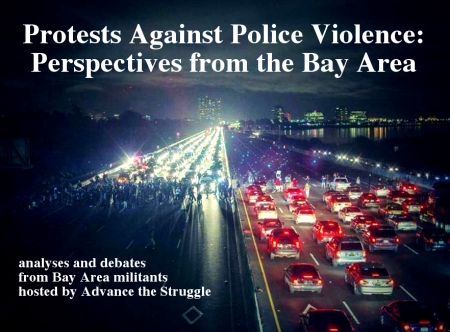Advance the Struggle along with La Peña Second Generation proudly announce an exciting event on the 50th anniversary of the Freedom Summer. The event will take place on Wednesday September 24th, 6:30pm at La Peña Cultural Center (3105 Shattuck Ave., Berkeley, CA). Below is a description of the event and the leaflets for the series. Hope to see you there!
With the recent protests and riots in Ferguson against the killing of Michael Brown by a white police officer, the issue of racial oppression has been thrust to the forefront of American popular consciousness. It is telling, that events in Ferguson happened 50 years after the Freedom Summer movement descended on Mississippi to fight black disenfranchisement by building black political power. Critical lessons were drawn from the Freedom Summer experience, such as the brutality of the state and it’s functionaries, the treachery of the Democratic Party towards black political demands, and the need to build independent political power and organization to challenge the structures of white supremacy.
Similarly, in Ferguson we have seen the deployment of the National Guard and the full repressive apparatus of the state to contain legitimate outrage by disenfranchised black residents over the killing of Mike Brown. Now that the larger protests have subsided, Democratic Party operatives are calling for a renewed voter registration drive for black residents in Missouri and the South to channel their rage into votes for the Democratic Party machine. But it is important to remember that this is the same party that houses both Missouri Governor Jay Nixon and his close political ally Jeff Roorda, a vocal police supporter and the man behind the Darren Wilson legal fund support page. We have to ask: is this the only option?
This event will shed light on the insights from participants in the Freedom Summer on these critical questions in order to help inform the struggle against racial oppression today.



 The roots of the Black Panther Party (BPP) lie within student struggle for fully-funded public education reflecting Black history, culture, and struggle. The founders of the party, Huey Newton and Bobby Seale, met at Merritt College in Oakland and began to struggle for education together with other black students. But unlike liberal forces in the movement, Newton and Seale saw the necessity to connect their struggle as black students to structural oppression in working-class black communities. Police murder and beatings combined with a deadly lack of jobs, healthcare, food and affordable housing; the BPP saw that the struggle for control over our schools must be connected to the revolutionary struggle for control over our communities. Looking to the present not a whole lot has changed in Oakland: the BART police murder of Oscar Grant and the numerous murders committed by OPD before and after him demonstrate that state-sponsored racism and violence continues to oppress and kill us; East Oakland has some of the highest rates of foreclosures in the state creating more and more homeless families; health clinics and other vital social services continue to get cut back or completely eliminated; free after-school youth programs and daycare centers continue to close down placing more burdens on working-class mothers, who struggle to find ways to make sure their children are cared for when they attend work and/or school. A central difference between then and now is the lack of an organization like the BPP striving to connect these issues and build community control. There is however a growing student movement, which is trying to fight the budget cuts and demand affordable quality education. There are also
The roots of the Black Panther Party (BPP) lie within student struggle for fully-funded public education reflecting Black history, culture, and struggle. The founders of the party, Huey Newton and Bobby Seale, met at Merritt College in Oakland and began to struggle for education together with other black students. But unlike liberal forces in the movement, Newton and Seale saw the necessity to connect their struggle as black students to structural oppression in working-class black communities. Police murder and beatings combined with a deadly lack of jobs, healthcare, food and affordable housing; the BPP saw that the struggle for control over our schools must be connected to the revolutionary struggle for control over our communities. Looking to the present not a whole lot has changed in Oakland: the BART police murder of Oscar Grant and the numerous murders committed by OPD before and after him demonstrate that state-sponsored racism and violence continues to oppress and kill us; East Oakland has some of the highest rates of foreclosures in the state creating more and more homeless families; health clinics and other vital social services continue to get cut back or completely eliminated; free after-school youth programs and daycare centers continue to close down placing more burdens on working-class mothers, who struggle to find ways to make sure their children are cared for when they attend work and/or school. A central difference between then and now is the lack of an organization like the BPP striving to connect these issues and build community control. There is however a growing student movement, which is trying to fight the budget cuts and demand affordable quality education. There are also 




You must be logged in to post a comment.